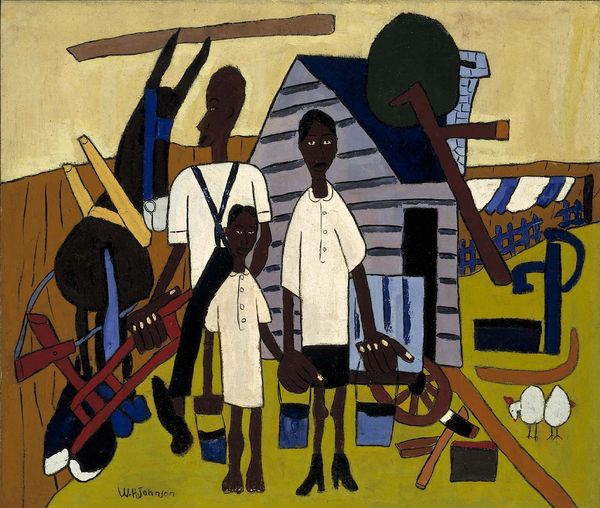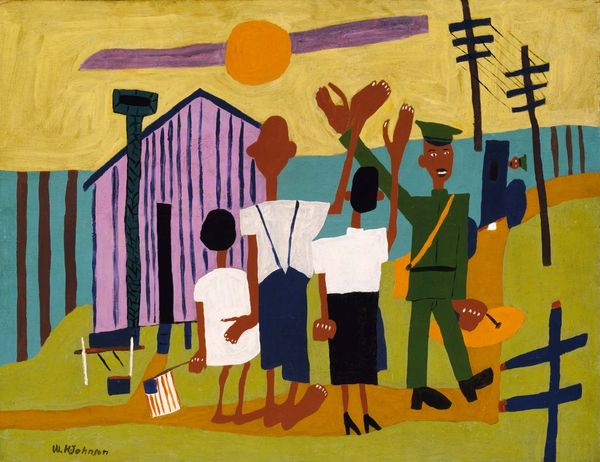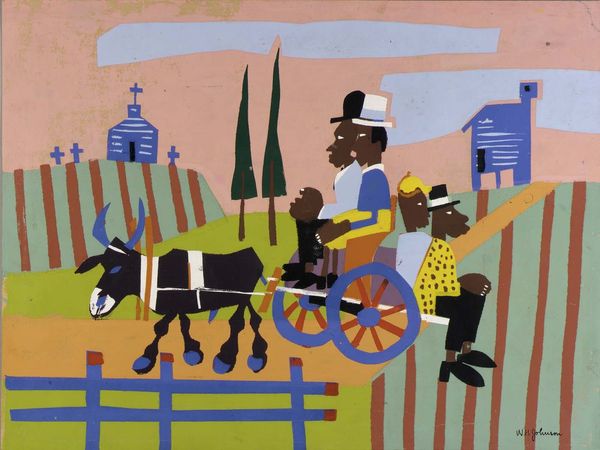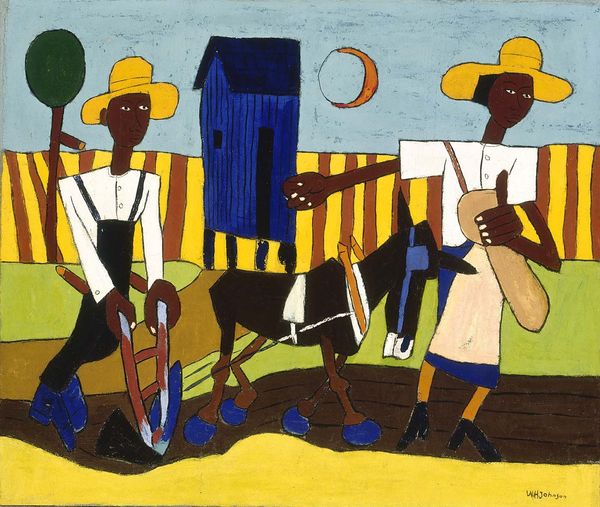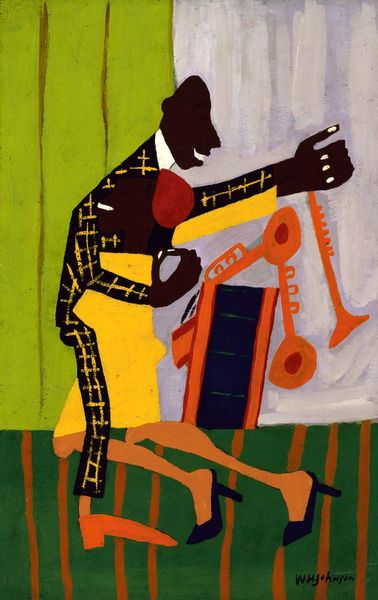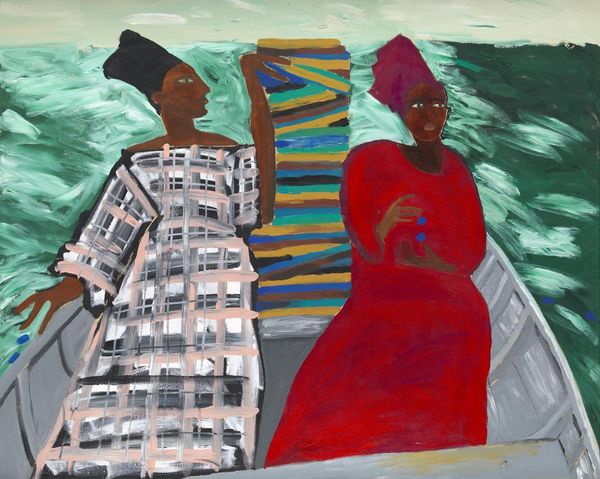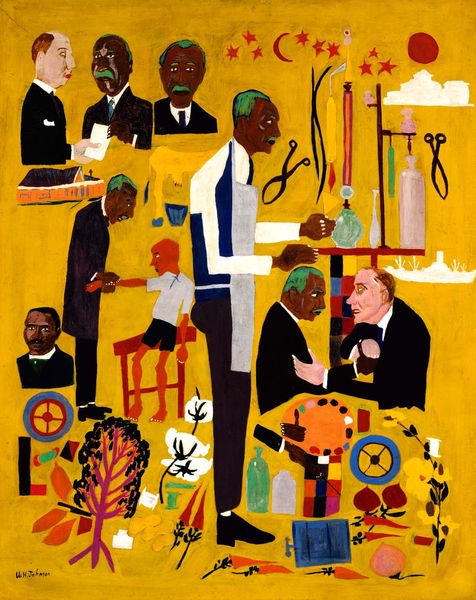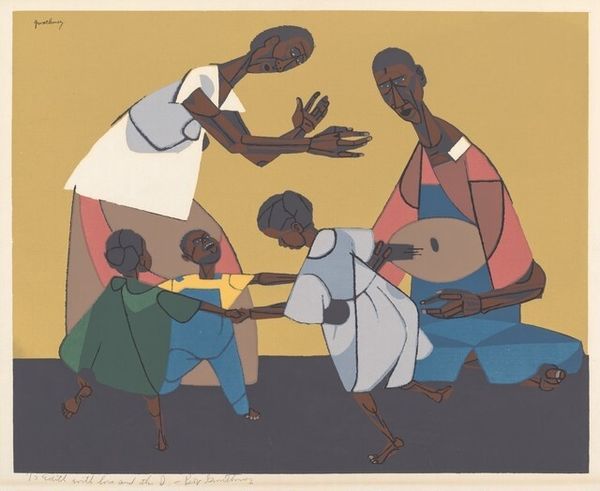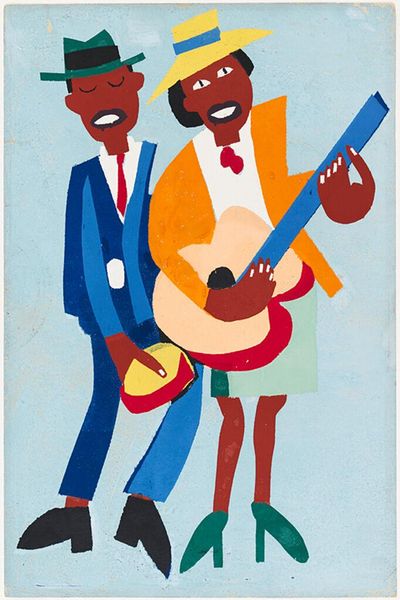
Copyright: William H. Johnson,Fair Use
Editor: We're looking at William H. Johnson's "Farm Family - Nursing Child" from 1944. It appears to be oil paint on canvas. I’m immediately struck by its folk-art aesthetic; it’s both simple and quite powerful. What draws your eye when you look at this piece? Curator: The simplification of form and bold color choices highlight Johnson’s concern with materiality and production. Look at the roughness of the paint application, the almost crude rendering of the figures. It isn’t about illusionism, it's about the stuff of painting itself and the labor embedded in it. How do you see the composition reinforcing that idea? Editor: I guess the lack of depth contributes? It flattens the image, emphasizing the surface of the canvas and the materiality you mentioned. I was focusing on the figures themselves, on the intimacy of the nursing mother... Curator: Right, but even the intimate act of nursing isn't romanticized. The blunt shapes, the unidealized forms—they resist sentimentality. Johnson's more interested in showing the *work* of family, perhaps. The work that happens outside on a farm and in raising and caring for children. Where do you think this perspective originates for Johnson? Editor: Perhaps from his own background? From witnessing the lives of rural communities? Curator: Precisely! Think about Johnson's context during the Harlem Renaissance, and his choice to depict scenes of everyday Black life in the rural South. What statements do you believe the artist may have wanted to suggest in regard to work and class? Editor: It makes me think about how labor and lived experiences of Black families are often overlooked in mainstream art. Showing their work makes it a form of recognition, and validation? I appreciate how this challenges preconceived notions of art and labour. Curator: Indeed. Johnson's focus on material, method, and setting asks us to question the societal constructs around art itself, challenging divisions between the supposedly high art of the canvas and the overlooked labor that sustains lives.
Comments
No comments
Be the first to comment and join the conversation on the ultimate creative platform.

